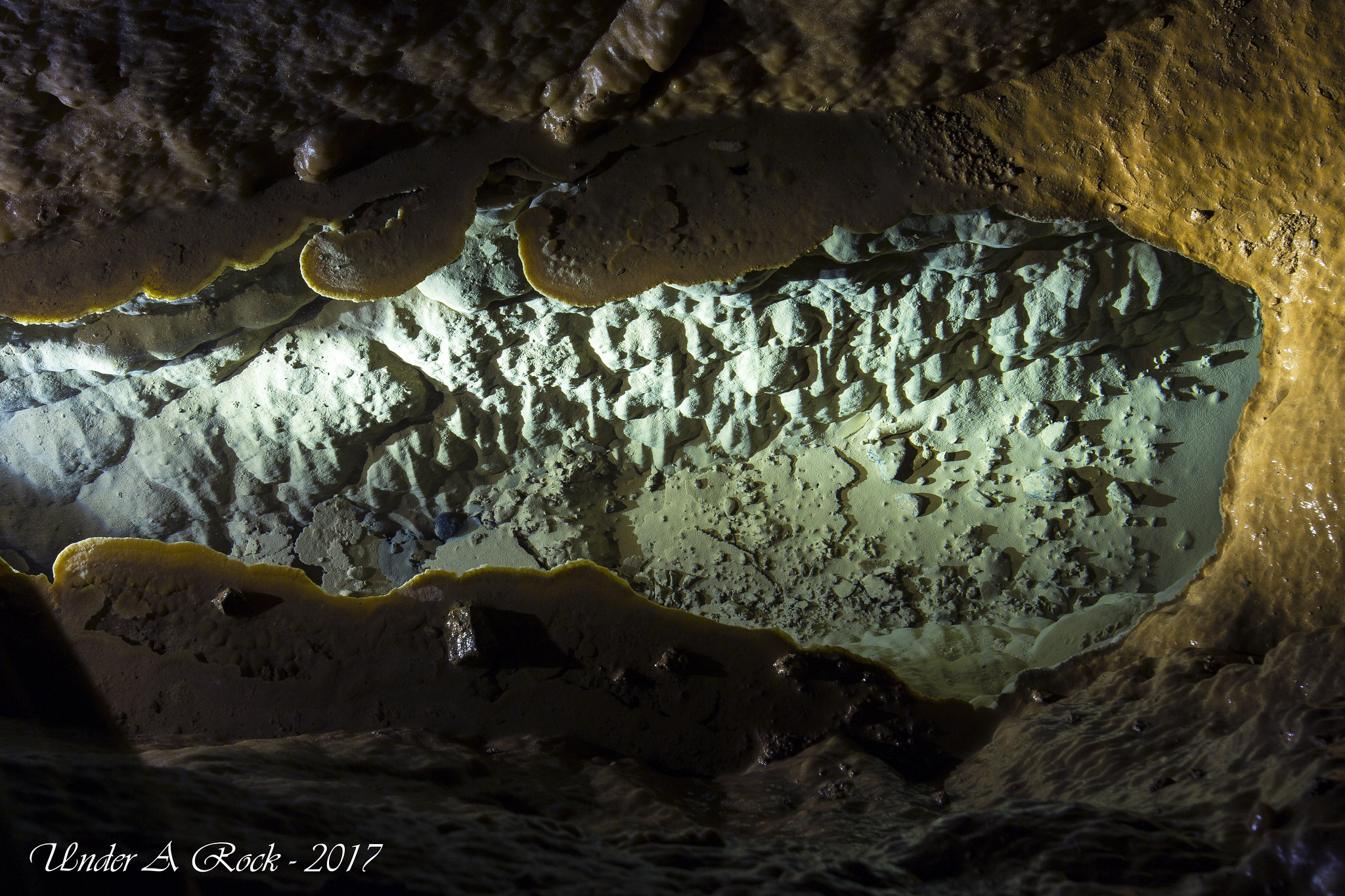 |
| Shelfstone and rimstone pools, 4th Formation Gallery. |
Floyd Waggy's Cave is a small but impressive cave on Peters Mountain in Pendelton County, WV. It has been closed for about a decade due to the landowners wishes to not have an accident in the cave. Before then access was also highly restricted. The cave was first entered in the 1970s by David Hubbs and Bill Jones. Our team gained access by contacting local cavers who looked into access. After a couple months of back and forth we were given permission for late April 2017, coincidentally during VAR. It is highly likely that access wont be granted for a very long time again, and access should not be sought. Access requires permission from no less than three landowners given that one must drive across a couple fields and pass three gates. Please do not ask about entering the cave, this was a one time deal to photo document the cave.
 |
| Reilly Blackwell with the rope for the entrance drop. Entrance is behind her to the left. |
Floyd Waggy's Cave has a relatively small entrance in a sink on a barren grassy hillside. It is surrounded by a fence and several old growth trees. Note: the entrance is NOT the one in the Pendelton County cave book. We rigged from two of the big trees and began down the first of three pitches in the entrance. The narrow entrance was full of large slabs of loose rock. The entrance drops 6ft to an almost flat ledge which slopes down to a sheer drop of 15ft to a big ledge. We tied the rope off to a big rock here to limit rope rub, the rock was the only thing I padded actually. From here a final lip drops 55ft free into a small room about 60ft in diameter and 60ft tall.
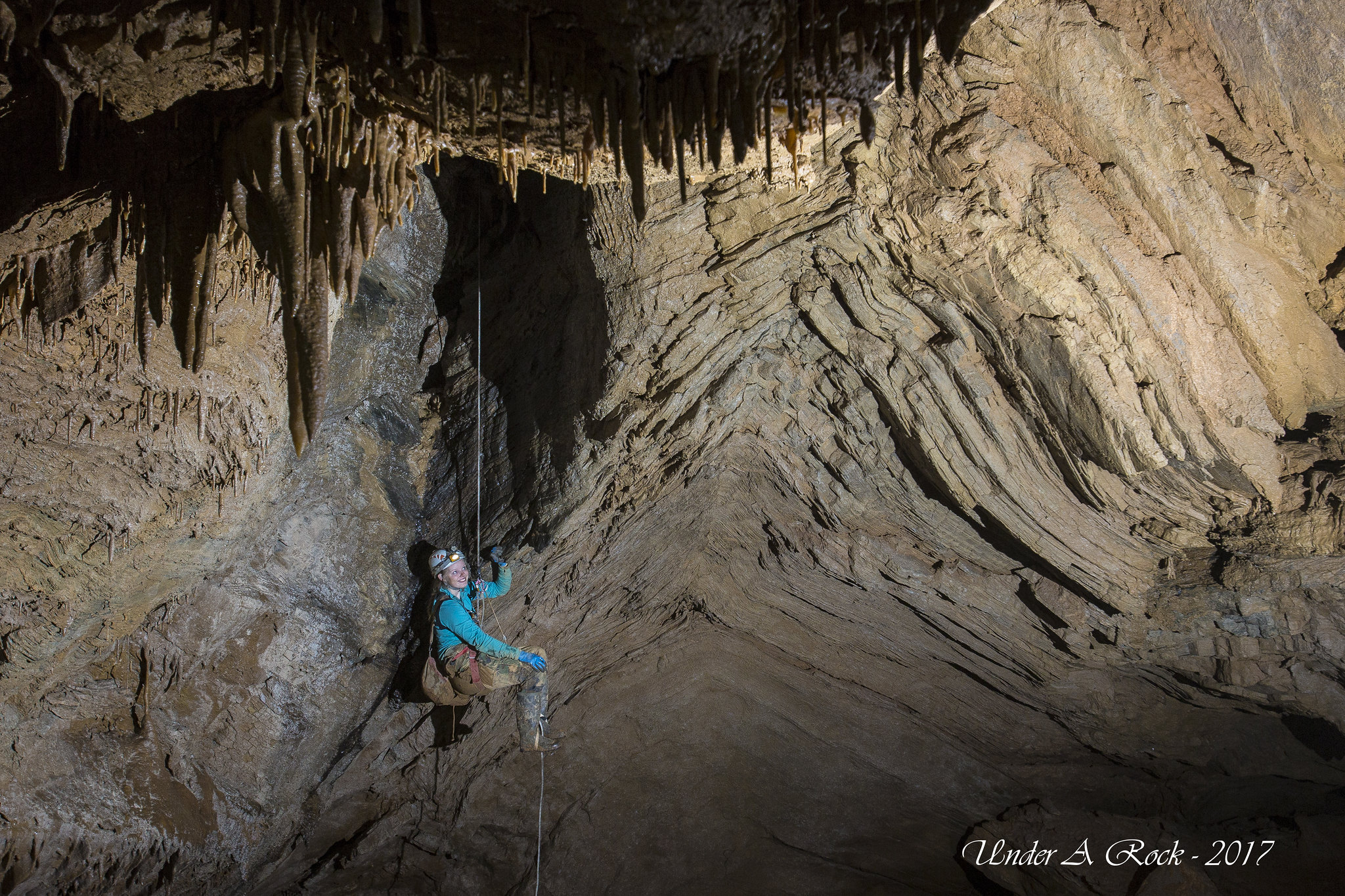 |
| Reilly Blackwell in the final 55ft free drop, note the impressive anticline fold. |
The entire cave is formed in the Tonoloway Limestone, on a sharp anticlinal fold. The cave runs N-NE along the strike. The cave intersects the anticline axis at the entrance room, the fold is very visible in the wall. To the south of here a few hundred feet of low and featureless passage extends, gradually moving west of the anticline. To the north a low crawl extends and opens into big trunk passage on the east side of the anticline, the passage here is sharply angled and drops down dip to the east. As the cave extends north for over a thousand feet the passage gets bigger as the cave gets farther down the anticline. It is a beautiful, and classic, Pendelton County Tonoloway limestone cave. Decorated, heavily folded, and just plain fun.
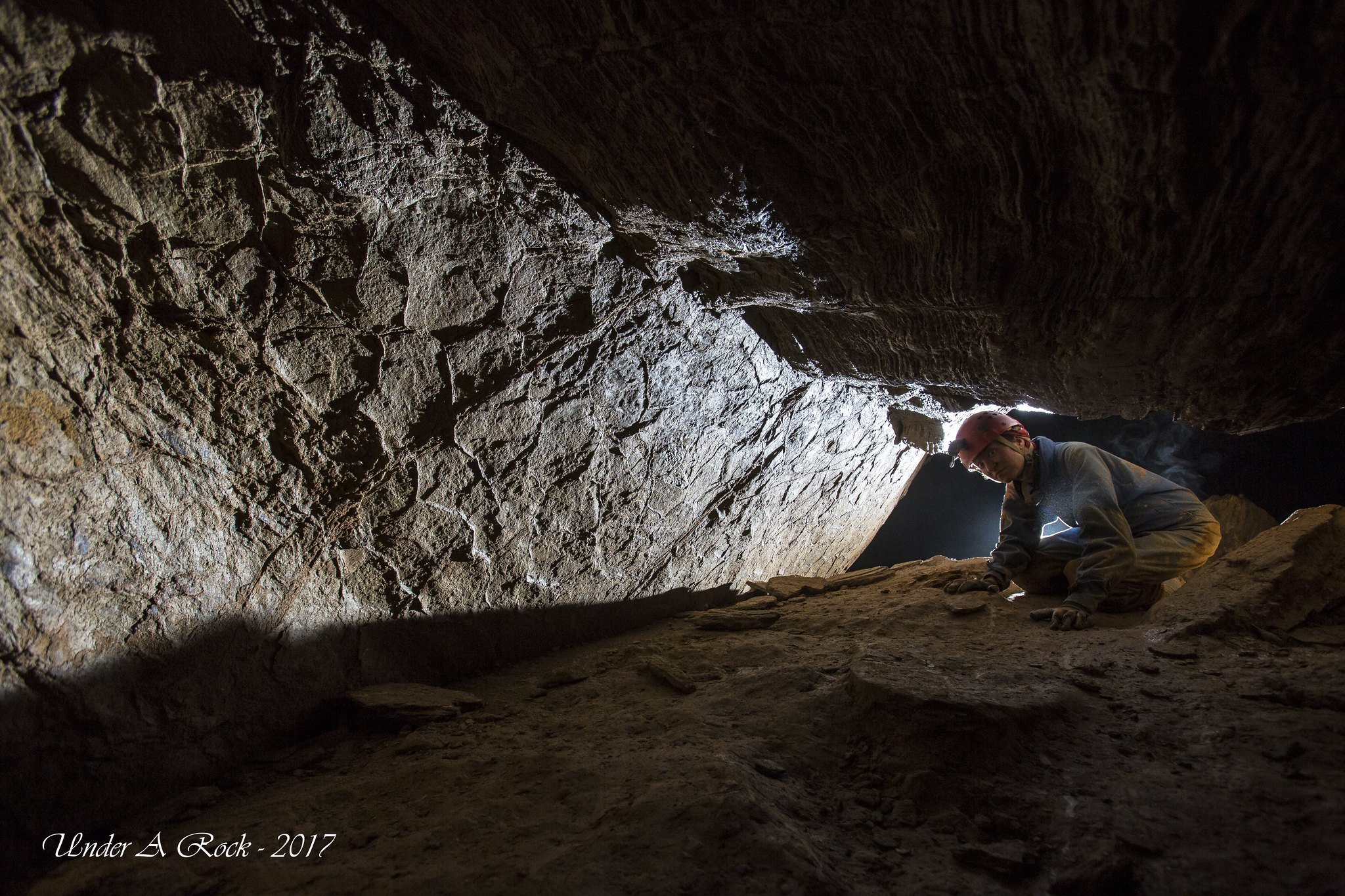 |
| Hope Brooks with mud cracks.prismatic jointing in a crawl near the entrance. |
The main cave is accessed via a short hands and knees crawl north of the entrance drop. The east wall is covered in what some (with more knowledge than I, admittely) are calling mud cracks. To me that look awfully like the prismatic jointing I have seen in Rapps and Buckeye Creek Cave. The rock, in every layer, fractures along the same shape for several hundred feet of the cave. The crawl opens into the first formation gallery. This gallery has two large haystacks and several smaller helectites and totems.
 |
| Robert Edmonds, 1st Formation Gallery |
David Hubbs related the discovery of the main cave to us as we moved through. He said that Bill Jones rappelled the final drop, went south and said the cave ended without much passage after a couple hundred feet and began out. David found the small crawl and after a few feet of crawling through a soda straw forest (obviously long gone) he looked up to see the massive flowstone formations, and thus Floyd Waggy's opened itself to human eyes. Trails were soon marked as the floor in the 1st gallery was hollow and quickly collapsed several inches.
 |
| Reilly Blackwell, translucent formation, 4th Gallery. |
Beyond the 1st Gallery the 2nd Gallery is only a hundred feet away. From here the floor climbs and drops several feet into the 3rd Gallery, mostly helectites and straws. The 4th Gallery is about another hundred feet away and is rather amazing. The centerpiece is a large flowstone column, multiple colors. The room is filled with long and tall totem formations, translucent dripstone, sheilds, and a small but beautiful pool surrounded by shelf stone.
 |
| Shelfstone, 4th Gallery. |
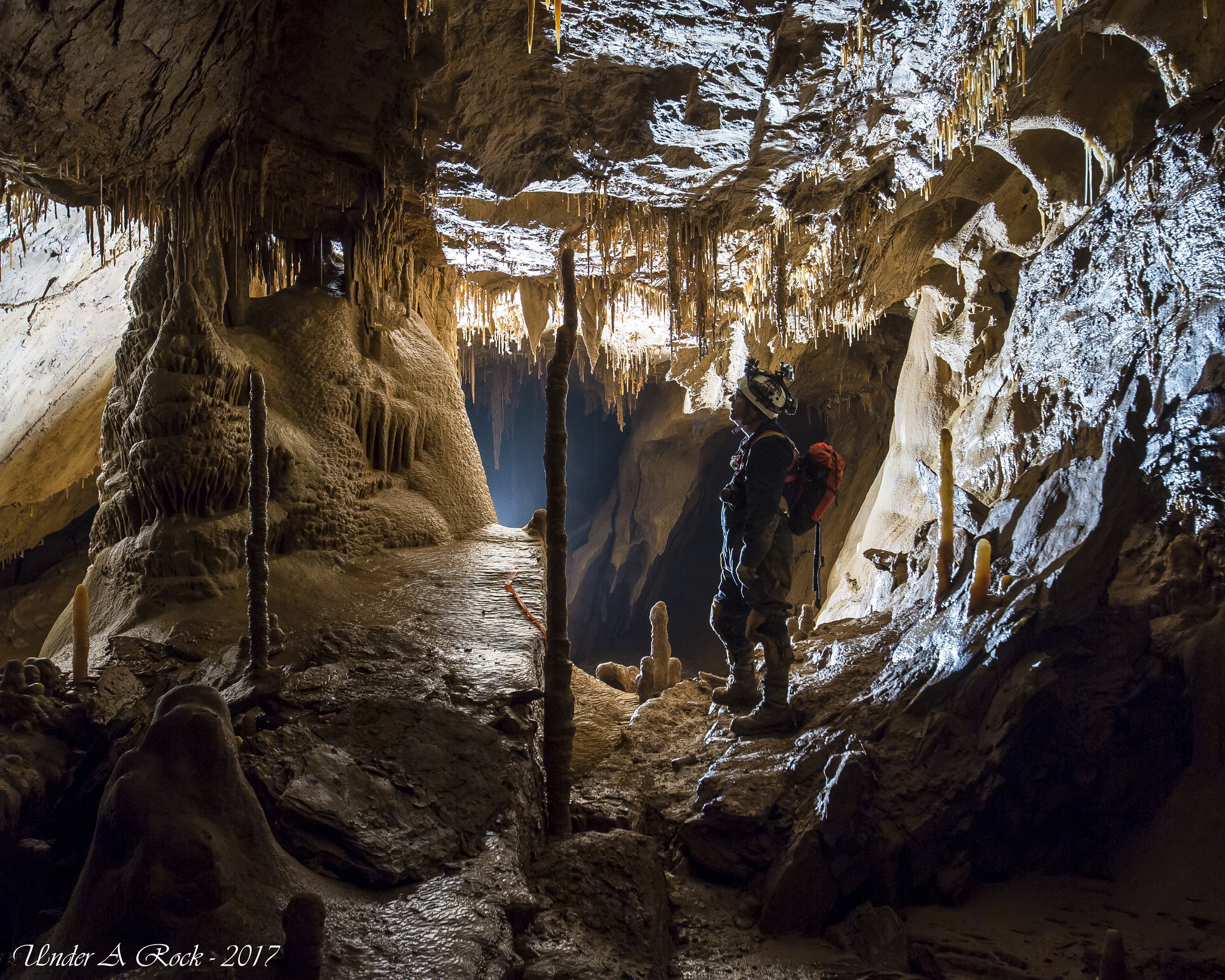 |
| Robert Edmonds in a forest of totems, stahls, and straws. The Flowstone Column centerpiece is to the right. |
The 5th Gallery is again not far away and is another gallery of dripstone columns and totems.
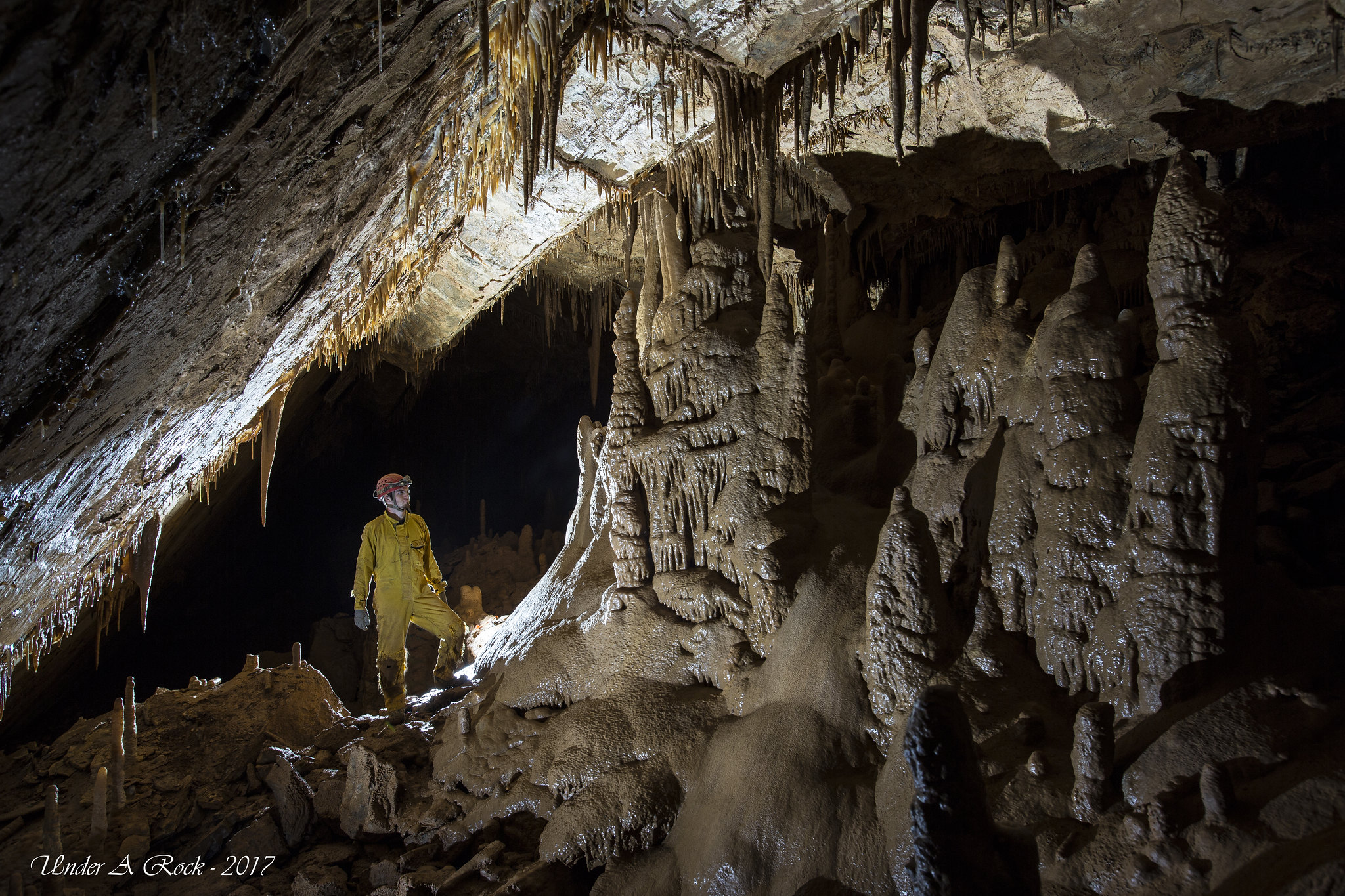 |
| Eric Pelkey, 5th Gallery |
A short walk and then steep and slick climb down leads to a large room about 150ft long, 50ft tall, and 40ft wide. The one wall is completely covered in a large flowstone formation, one of the largest in the cave. This is the 6th Gallery, the 7th Gallery is another massive flowstone haystack at the north end of the room.
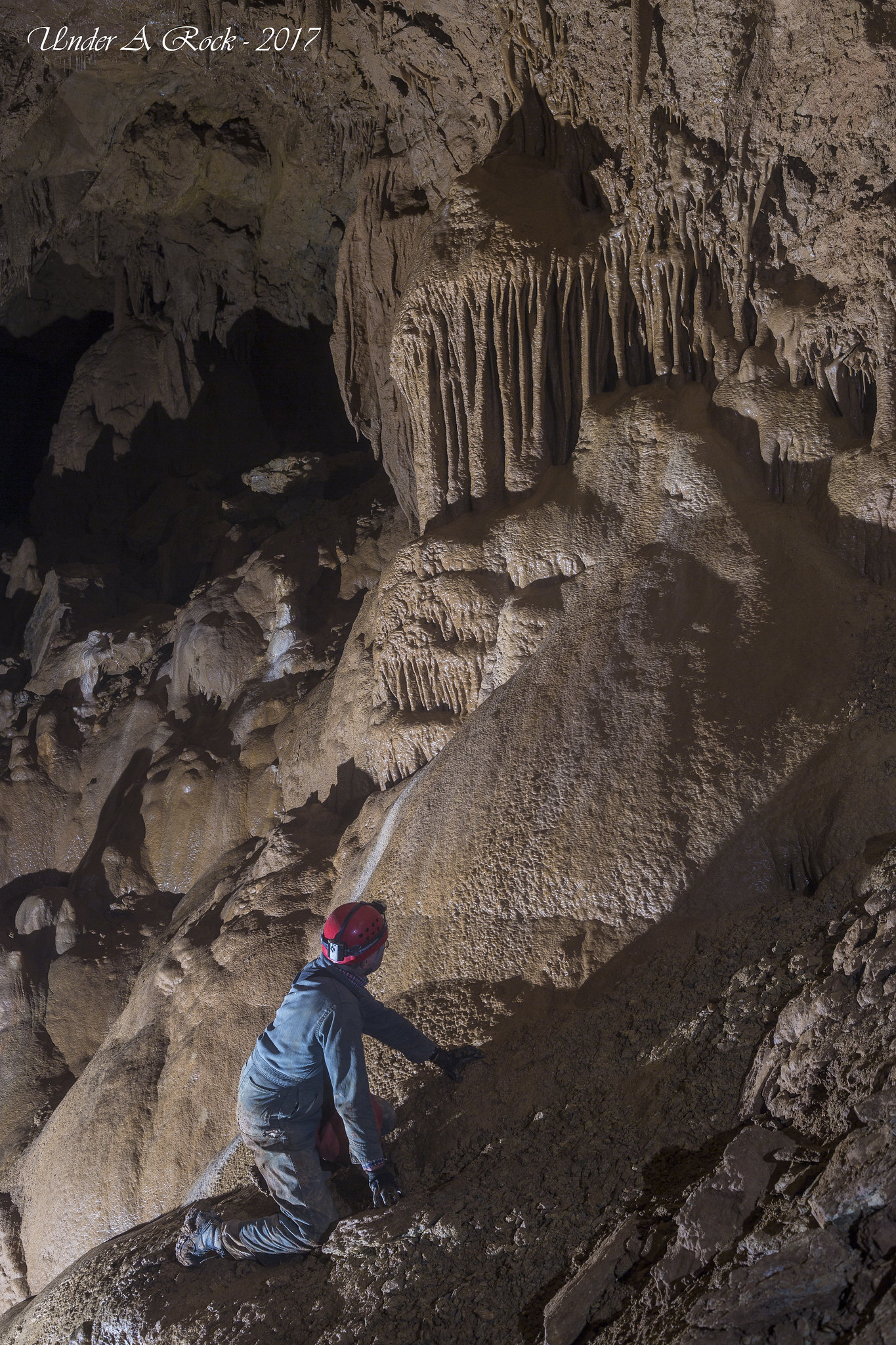 |
| David Hubbs, 6th Gallery |
Beyond the 7th Gallery the cave drops as a slick mud slope to a wall covered in aragonite bushes, this 8th Gallery is almost entirely snow white clusters of aragonite.
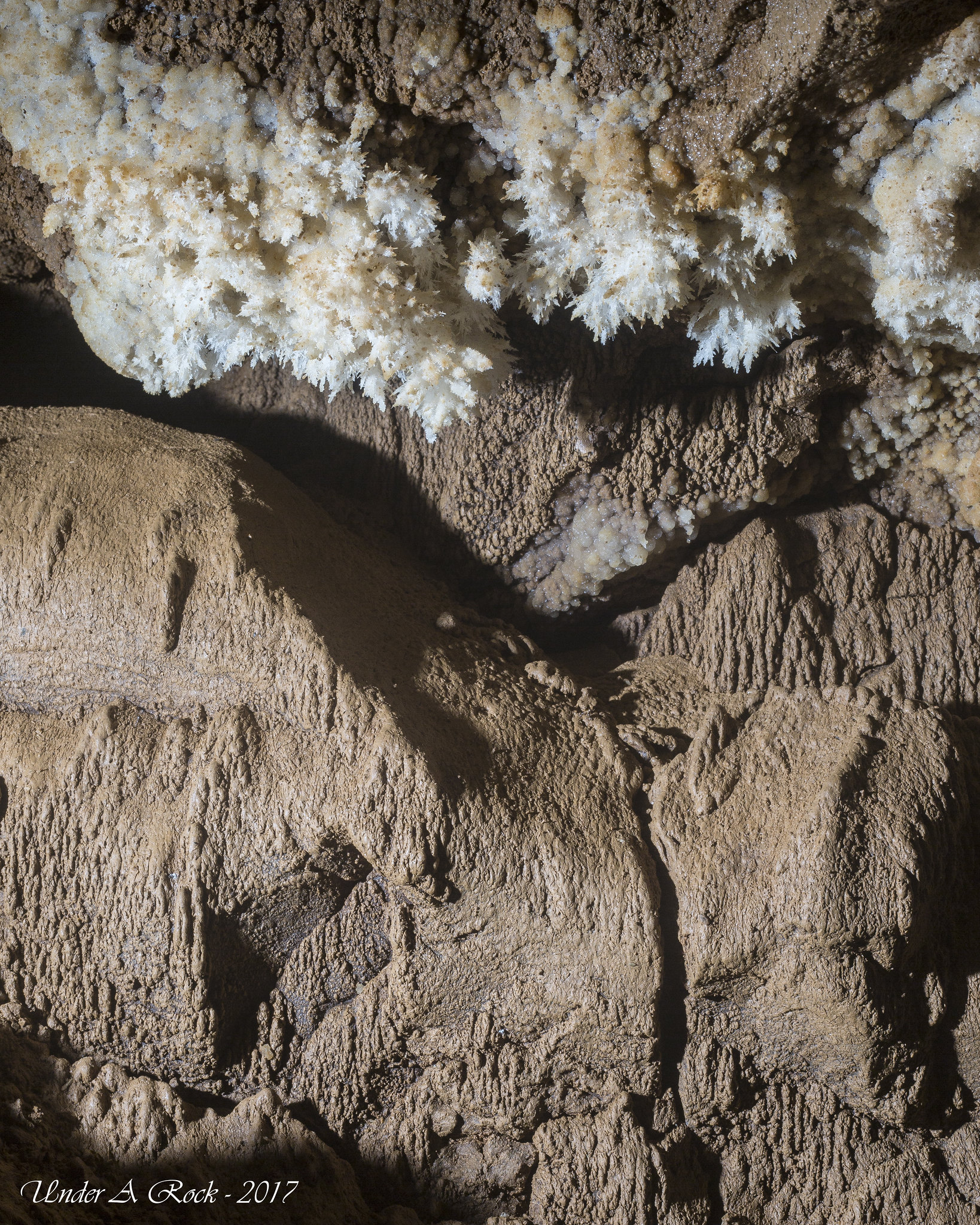 |
| Aragonite and sculpted mud, 8th Gallery. |











No comments:
Post a Comment